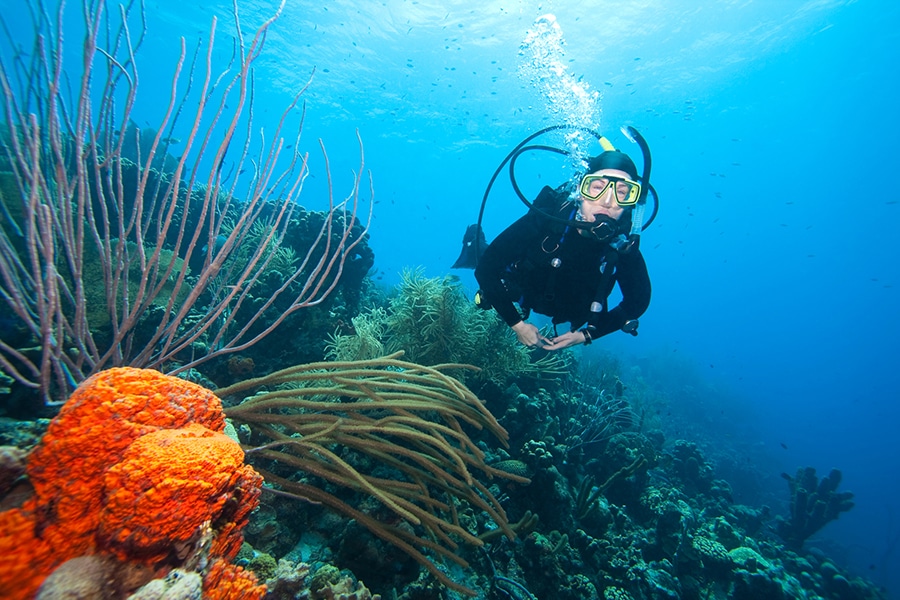The islands that constitute Florida’s lower keys burst with exciting flora and fauna that you won’t likely find on the mainland. You could spend weeks exploring the coves, beaches and dense forests that cover the island shores, not to mention the waters that surround the keys. You’ll also find great Good Sam Parks in the vicinity.
Here are five great ecotourism adventures in the Lower Keys.
1) Stock Island Tropics
Stock Island doesn’t get the attention of its flashier neighbor, Key West, but its natural treasures are just as dazzling. Covering much of the area north of Highway 1, the Key West Tropical Forest and Botanical Garden thrills visitors with its lush native landscapes, two ponds and neotropical migrating birds that stop on the island from as far away as South America. Hundreds of diverse butterfly and plant species thrive on the grounds, providing a deeper understanding of the Keys’ dynamic environments.
2) Hiking National Key Deer Refuge
Big Pine Key is a prime ecotourism hot spot. More than half the island’s 9.9-square-mile surface is occupied by the National Key Deer Refuge, home to the small Key deer, an endangered subspecies of white-tailed deer. Get prime glimpses of these pint-size deer — standing just 30 inches tall — by embarking along the several hiking and bike trails that snake into the into the refuge. The deer’s appearance has been likened to Bambi, making them particularly photogenic. Not afraid of humans, the mammals venture onto roads and into yards, so drivers are warned to stay on the lookout for these diminutive creatures.
The Lower Keys are a paradise for snorkelers and scuba divers. Long recognized as one of the special jewels of the Florida Keys reef tract, the coral reef of Looe Key — just three miles west of Big Pine Key — has enjoyed special protection since 1981. As a result, large schools of colorful fish and a gorgeous coral reef thrive, giving divers a visual feast. Wreck diving has long been popular in the region, and this pastime got a shot in the arm in 1998 with the sinking of a 210-foot freighter Adolphus Busch. Scuttled intentionally to form an artificial reef, the submerged ship can be found 7 miles southwest of Big Pine Key. Tours are available to the vessel, which is a diving playground as well as a home to a variety of marine life forms.
4 ) Florida Keys Aquarium
Ready to see sharks close up? The Florida Keys Aquarium on Marathon Key gives visitors a truly immersive experience with reef fish, invertebrates, stingrays and sharks. The facility’s reef exhibit and shark habitat occupies a massive 200,000-gallon interconnected saltwater aquarium. Visitors without prior scuba experience can enjoy the in-water opportunity with supervision from professional dive instructors. Travelers also can view exhibits, snorkel in a shallow, protected lagoon and explore touch tanks with starfish, conchs and horseshoe crabs. Feed debarbed stingrays and mellow baby nurse sharks.
5) Healing the Turtles
Sea turtles face danger at every turn during their migrations across the ocean. Fortunately, the fascinating Turtle Hospital on Marathon Key helps many of these vulnerable creatures recover from injuries. Visitors can meet rescued sea turtles during behind-the-scenes tours of the planet’s first state-licensed veterinary hospital specializing in the fascinating creatures. The hospital’s team rehabilitates and nurtures sick and injured turtles and, when it’s possible, releases them back into the sea. Since opening more than 30 years ago, the hospital has treated and rehabilitated nearly 2,000 injured sea turtles and assisted scores of hatchlings gone astray after leaving their nests. If you’re lucky, you’ll time your visit with the inspiring release of a rehabilitated turtle.
Make plans today to explore Florida’s Lower Keys. Visit www.fla-keys.com/lowerkeys.
